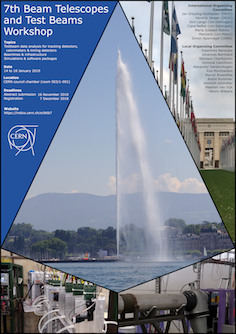Speaker
Description
Planar n+-in-n silicon pixel sensors used in tracking detectors like the ATLAS Inner Detector need a high efficiency to detect most of the traversing particles. Based on the IBL pixel design with a pitch of 250 µm x 50 µm new designs with modified n+-implants or bias grid modifications were developed in Dortmund to investigate the effects on the efficiency.
Several different modified designs are placed on one sensor which is read out with a FE-I4B. Thus a direct comparison between the designs can be made.
After irradiation to different fluences, different sensors are tested in test beam measurements at CERN. The raw data is reconstructed with EUTelescope and analysed with TBMon2.
The in-pixel efficiency maps of the different designs reveal special regions with higher efficiencies towards the pixel edges. This causes an anomalous distribution of the residuals which are calculated by EUTelescope and used to perform the alignment. In this talk the problem is outlined and a solution for the inaccurate alignment of EUTelescope is presented.
